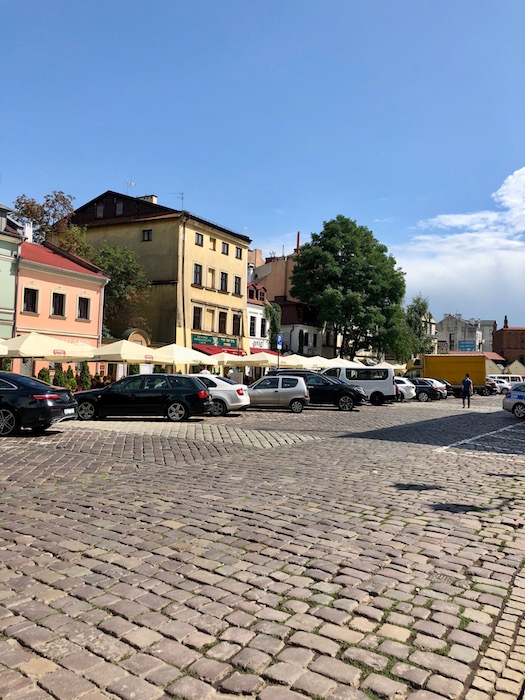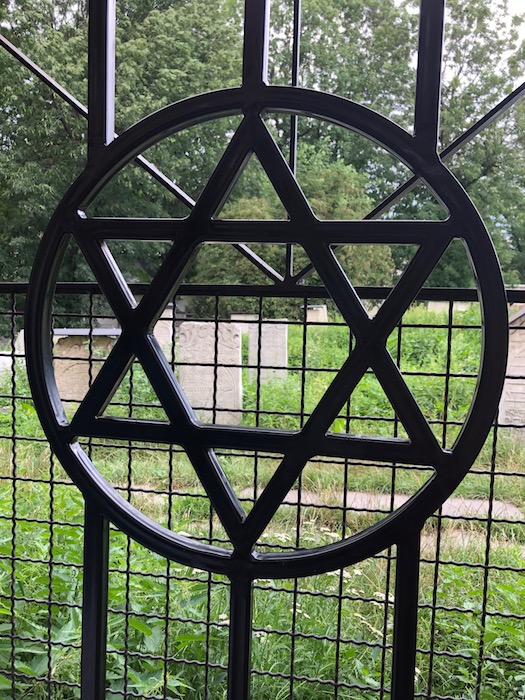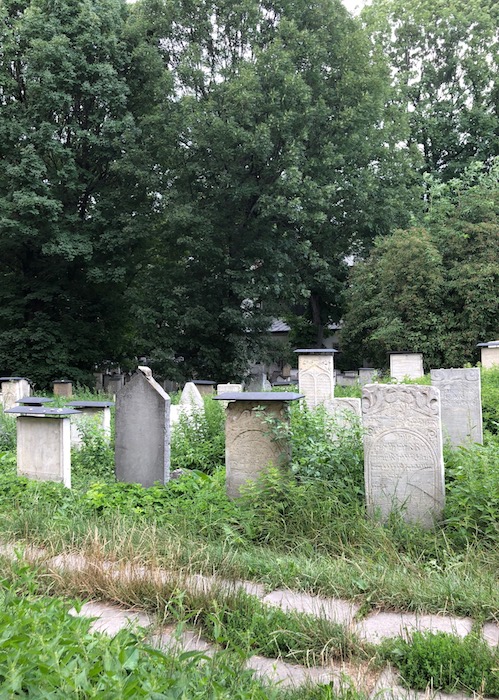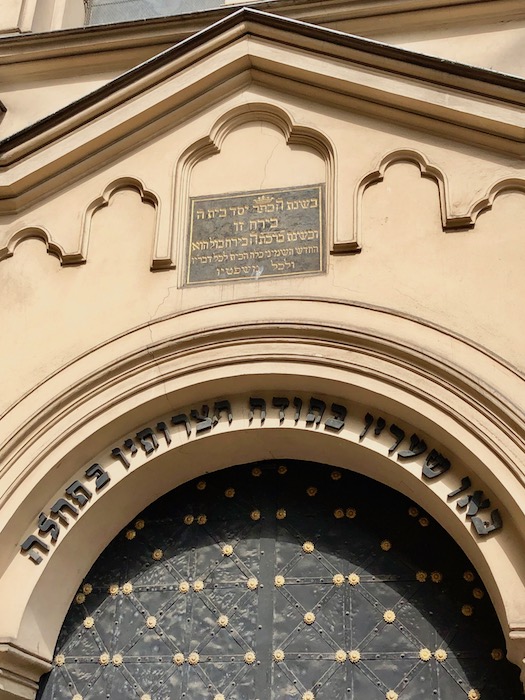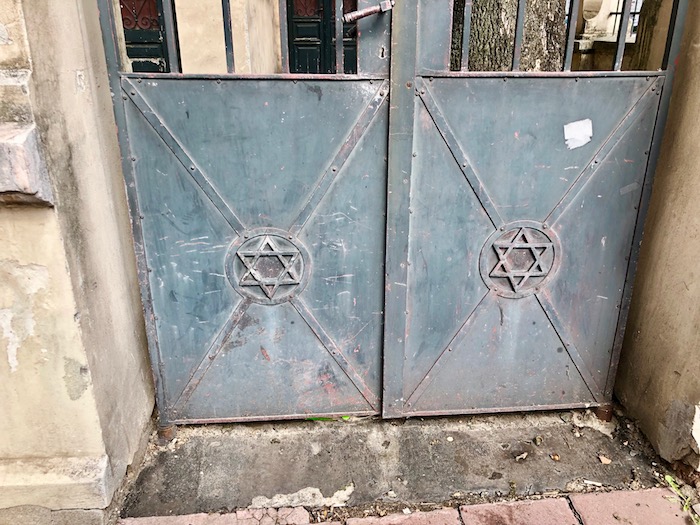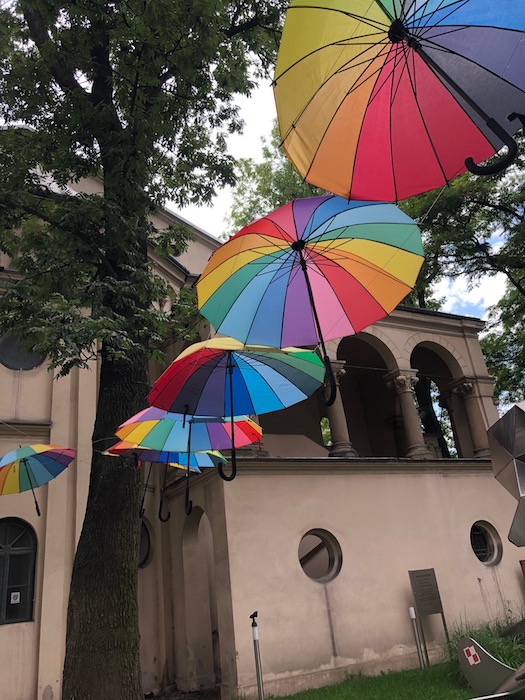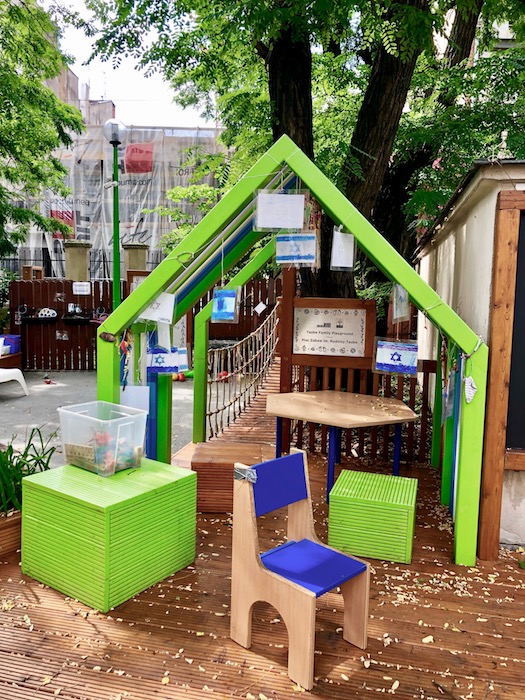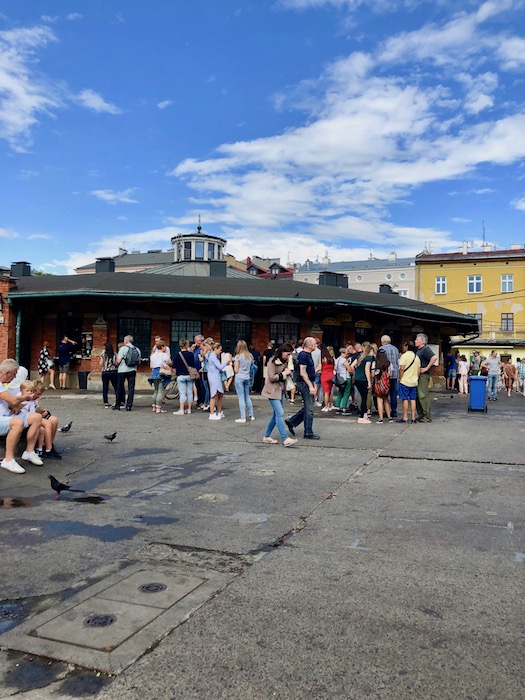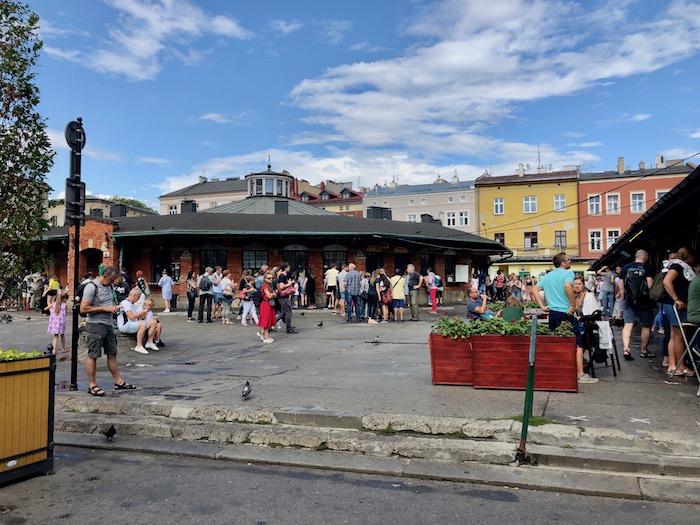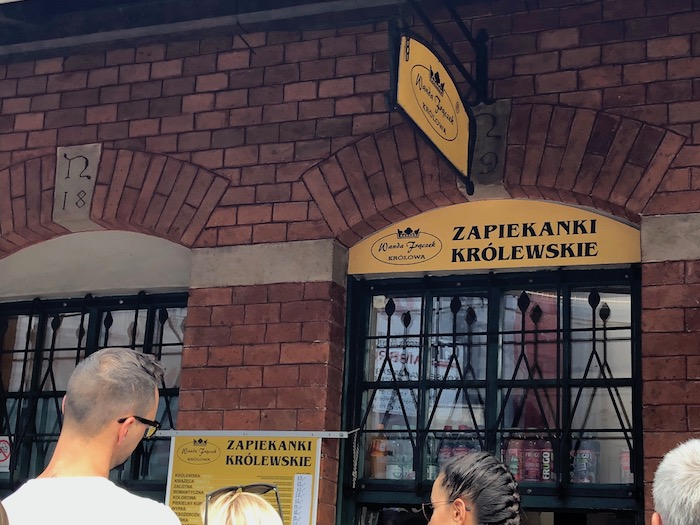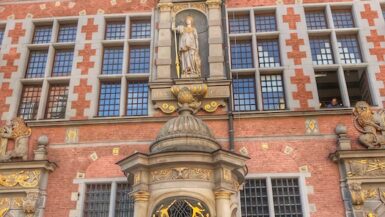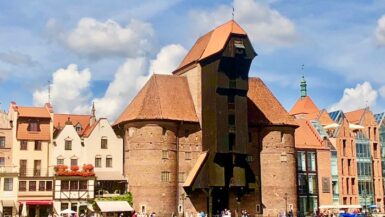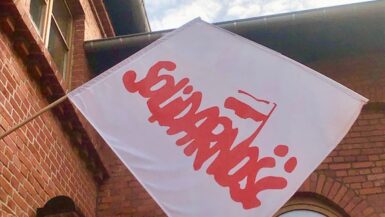August 4, 2019
By the time I reached the Kazimierz District of Krakow, a mere 1.1 miles from my apartment, I knew I’d made the wrong decision to take the afternoon tour. Not due to the tour itself, but because I was exhausted from the walk and my stomach was still not happy. I found the meeting point at the Old Synagogue and decided since I was there, I might as well stay. I would lag at the back of the group with a mom and dad pushing a stroller for much of the tour.
Our Walkative tour guide, Natalia, was bubbly and full of information regarding the old Jewish district. She made the tour interesting and, despite my not feeling well, I was ultimately glad I stuck it out.
Kazimierz used to be its own city back in the 14th century when Kazimierz the Great, the “King of Jews and Peasants”, founded it. The king recognized the value of having a Jewish population because the people tended to be better educated and entrepreneurial. Czechs, Poles, and some Germans joined the Jewish population co-existing off and on for several centuries. Unlike the rest of Krakow that survived the war, much of the Kazimierz area was destroyed in the Nazi invasion. However, renovation and gentrification efforts now find this area burgeoning with restaurants, small hotels, galleries, and restaurants.
While there used to be hundreds of synagogues in the area, most of them small, only seven synagogues remain. Only a few of those are still active. The census states there are 700 practicing Jews in Krakow, but since many older Jews had to hide their faith and are only now telling the younger generations about their heritage, the number is likely much higher.
Of the seven synagogues, we visited the outsides of six of them. We didn’t have a chance to go inside any of them, so I’ll have to try and put that on my schedule to do sometime later in the week. The Old Synagogue was built in the 15th century and is the oldest synagogue in Poland. While it was built for the use of the entire community (well, at least the men of the community), it is no longer active. It was destroyed by the Nazis but was part of the area’s restoration.
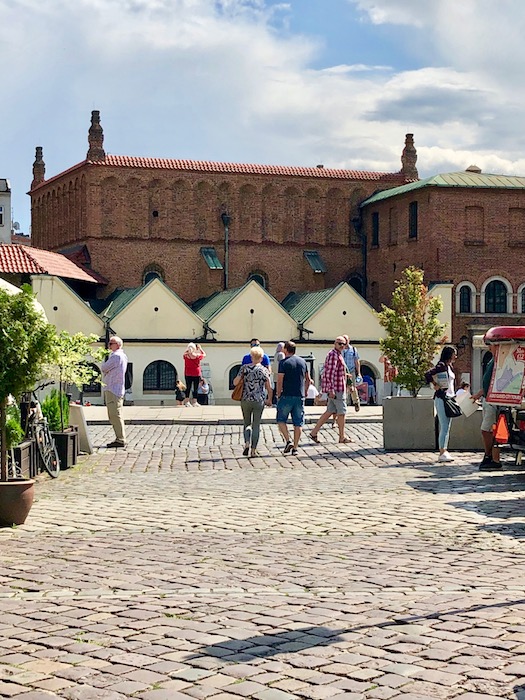
The Popper Synagogue was built in the 17th century by merchant Wolf Popper and was used as a family synagogue. It was completely destroyed during WWII and no records regarding what it’s interior looked like before exist. However, the building has been restored and now houses a large Judaica store and bookshop. On the way into the synagogue’s courtyard, is a mural I particularly liked.
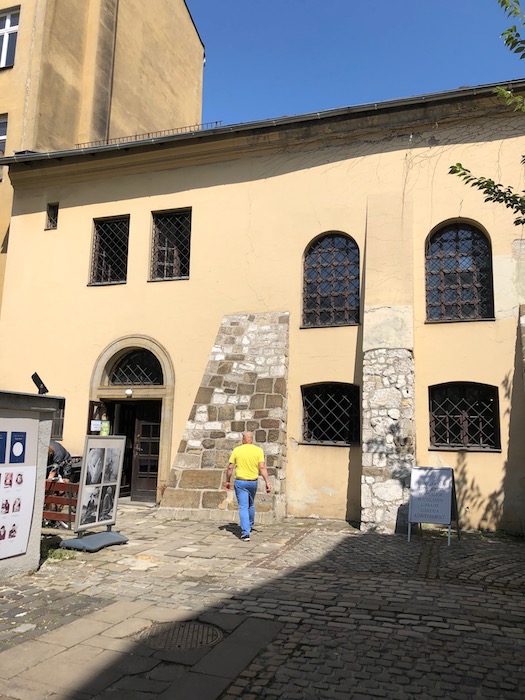
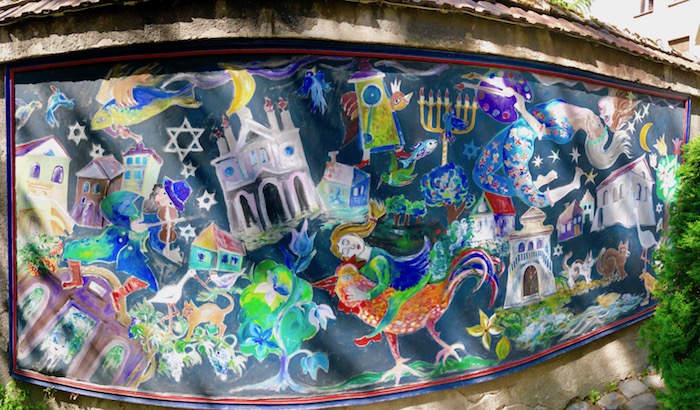
The Remu’h Synagogue was built in 1558 and dedicated to Rabbi Remu’h, acclaimed for his commentaries on the Torah and reputed to be a miracle worker. His grave nearby is a site for pilgrims. Although it is one of the smallest of all the synagogues, Remu’h is still active today.
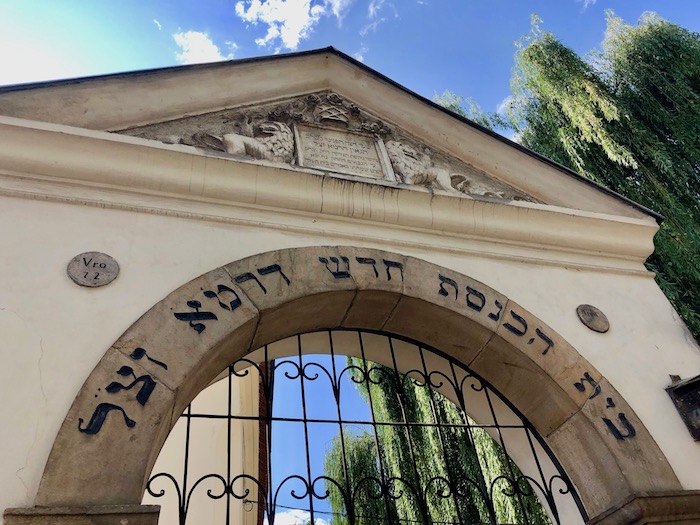
Across the street, is Hotel Rubinstein, named after Chaja Rubinstein aka Helena Rubinstein, who was born in Kazimierz. Helena is renowned for starting a beauty business in Australia based on a family face cream recipe. She also developed waterproof mascara – thanks for that. After developing her business, she sold it for $8 million, then bought it back after the Great Depression for $2 million. When she died at the age of almost 100, the estimated worth of her business was $100 million.
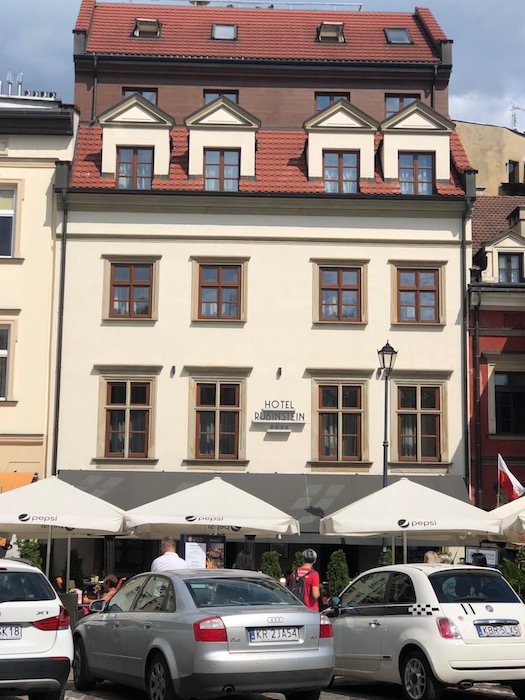
The cemetery where Rabbi Remu’h is buried has fallen into disrepair. It is the oldest surviving cemetery in Krakow, but no one has been buried in it since the 19th century. The cemetery was badly damaged during WWII; however, miraculously, the grave of Rabbi Remu’h survived intact, adding to the belief that he was a miracle worker.
Isaak’s Synagogue was built by one of the King’s bankers – Isaak Jakubowicz. It is unusual as it has an entry built onto to it strictly for the admission of women. Unfortunately, this synagogue is no longer in use.

While many of the synagogues were personally financed, the Kupa Synagogue was built by and for the community. It is now used as a Jewish cultural center. The name of the synagogue was controversial. In the Jewish culture, a kupa is a charity box; however, when translated in Polish, the word means “sh*t.” Probably not the best name to be used in a Polish neighborhood.
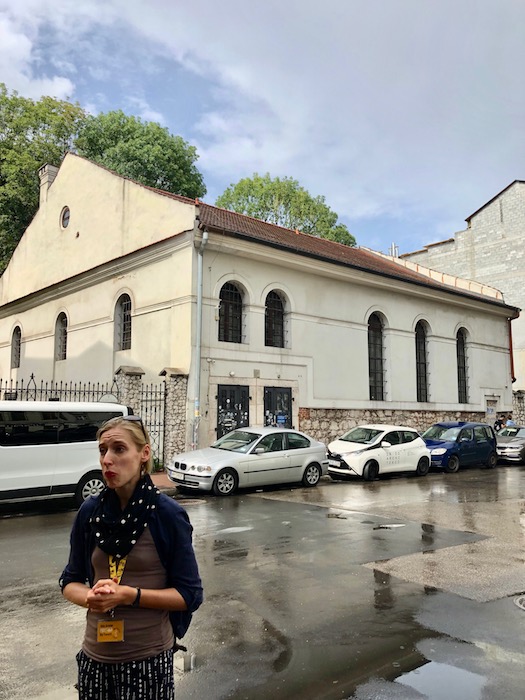
Next to the Kupa synagogue, is a portion of the wall that used to separate Kazimierz from the rest of Krakow. Even back then, the Jewish population was isolated.

The last synagogue we visited was the Temple Synagogue, built by and for reform Jews in the mid-19th century. Although the exterior is based on the neo-Romanesque style, the interior is apparently Moorish in design. The synagogue is still in use and is attached to the relatively new Jewish Community Center. The Prince of Wales and several donors from the US donated the money for the JCC – it is now the site of the first Hebrew kindergarten since WWII.
As we neared the end of the tour, Natalia took us through the new market square, which is built around the old kosher slaughterhouse. The building now houses a variety of food vendors, most of who sell zapiekanki, a Krakow street food consisting of half of a baguette topped with mushrooms, cheese, and a choice of toppings. It’s also the location of a branch of Good Lood, reportedly the best ice cream place in the city.
Our last stop was a courtyard used by Steven Spielberg for the movie Schindler’s List. The location was used in some of the ghetto scenes, but it is not located in the ghetto, which is on the other side of the river. At the time, the Kazimierz District was in disrepair; however, due to the movie, there was a spike in tourism and interest in the district. The city government found money in its budget to start renovations, which continues to this day.
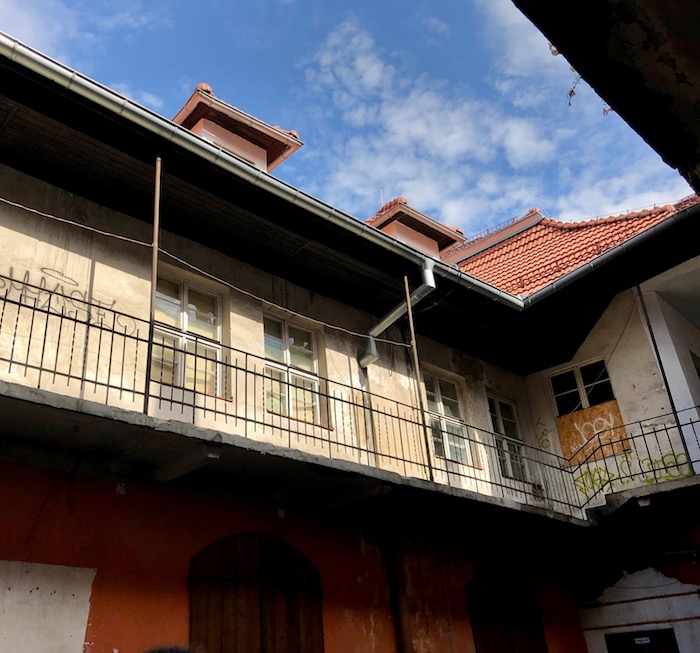
Despite my weakened condition, I thoroughly enjoyed the tour and thought Natalia did a really good job (BTW, this was a free walking tour). By the end though, I was totally depleted of energy. I walked back to the area around the Temple Synagogue and called for an Uber. It was all I could do to slowly walk up the stairs to my 4th-floor apartment and flop into bed. My alarm is set for early tomorrow to join another tour. Goodnight.



